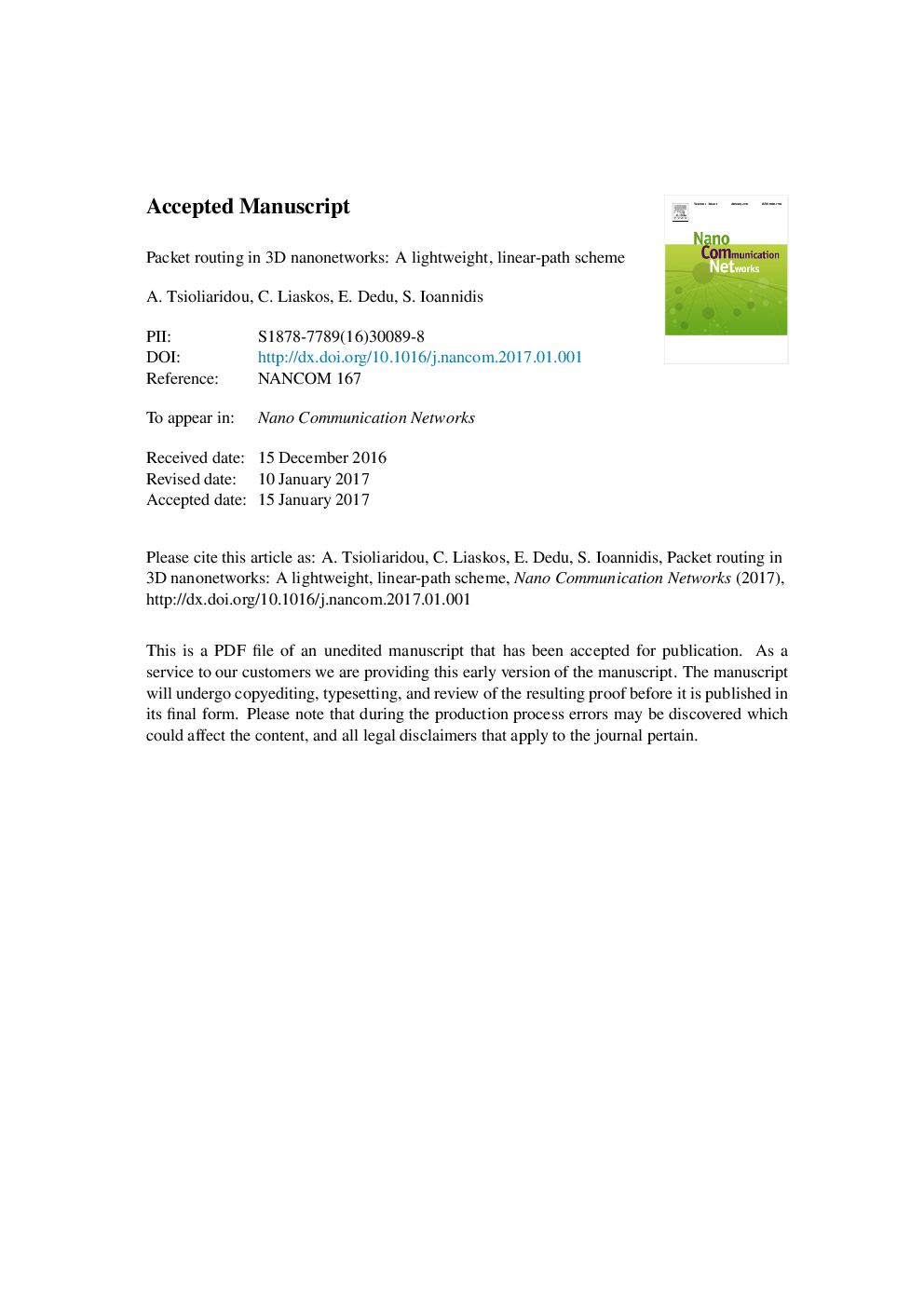| Article ID | Journal | Published Year | Pages | File Type |
|---|---|---|---|---|
| 4956954 | Nano Communication Networks | 2017 | 27 Pages |
Abstract
Packet routing in nanonetworks requires novel approaches, which can cope with the extreme limitations posed by the nano-scale. Highly lossy wireless channels, extremely limited hardware capabilities and non-unique node identifiers are among the restrictions. The present work offers an addressing and routing solution for static 3D nanonetworks that find applications in material monitoring and programmatic property tuning. The addressing process relies on virtual coordinates from multiple, alternative anchor point sets that act as viewports. Each viewport offers different address granularity within the network space, and its selection is optimized by a packet sending node using a novel heuristic. Regarding routing, each node can deduce whether it is located on the linear segment connecting the sender to the recipient node. This deduction is made using integer calculations, node-local information and in a stateless manner, minimizing the computational and storage overhead of the proposed scheme. Most importantly, the nodes can regulate the width of the linear path, thus trading energy efficiency (redundant transmissions) for increased path diversity. This trait can enable future adaptive routing schemes. Extensive evaluation via simulations highlights the advantages of the novel scheme over related approaches.
Related Topics
Physical Sciences and Engineering
Computer Science
Computer Networks and Communications
Authors
A. Tsioliaridou, C. Liaskos, E. Dedu, S. Ioannidis,
